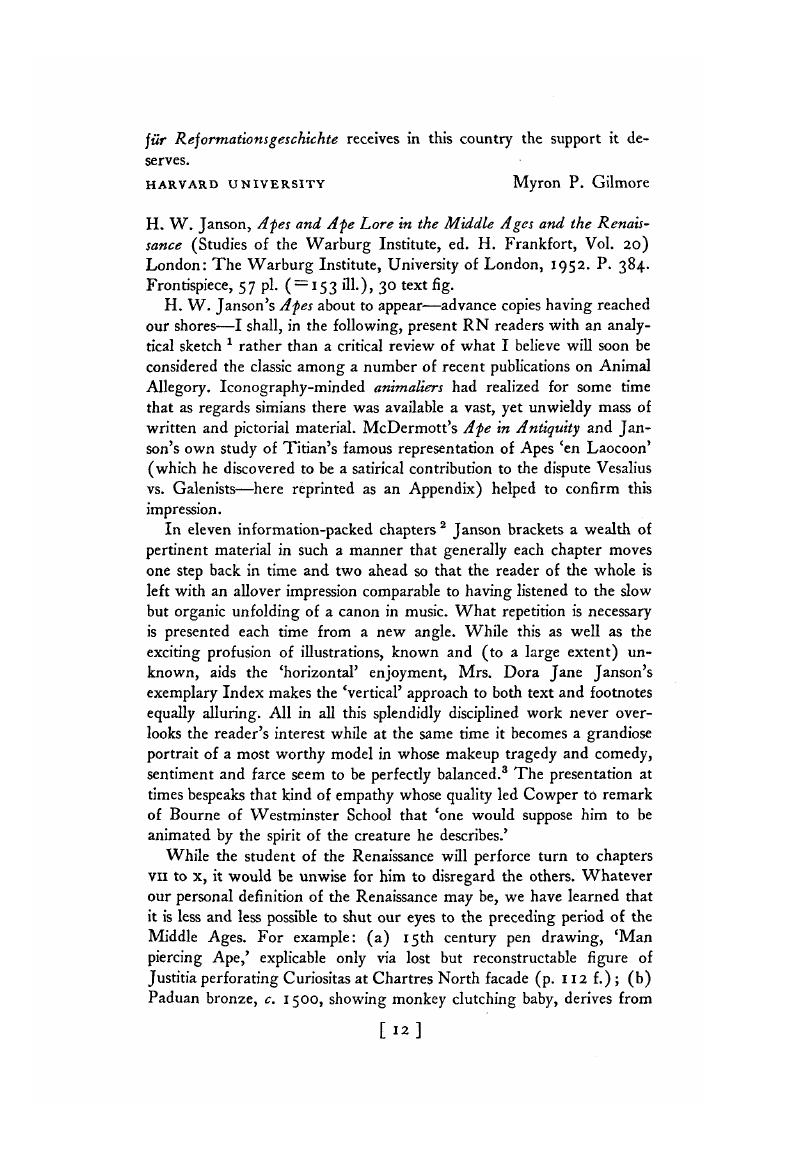No CrossRef data available.
Published online by Cambridge University Press: 20 November 2018

1 Based on ‘final page proofs, uncorrected,’ which recently I had the privilege to examine, lovingly if rather hurriedly.
2 I. Figura Diaboli: The Ape in Early Christianity; II. The Ape as the Sinner; III. Similitudo Hominis: The Ape in Medieval Science; IV. The Ape and the Fall of Man; V. The Fettered Ape; VI. The Ape in Gothic Marginal Art; VII. Apes, Folly and Vanitas; VIII. Apes, the Senses and the Humours; IX. The Sexuality of Apes; X. Ars Simia Naturae; XI. The Coming of the Anthropoids.
3 For the ape as a tragic symbol of unjust suffering of minorities, cf. p. 200 (on fools); Christ and the fettered monkey set in parallel, p. 150; Jefferson's ‘unfortunate analogy,’ p. 276.
4 P. 173f. for the brilliant literary reconstruction of this motif leading back to Antiquity. For the reverse situation in which the Renaissance aids in explaining a mediaeval problem, cf. the use of Hamlet's ‘famous ape,’ to explain an obscure passage in Hildegard of Bingen, p. 176f.
5 Dr. Johnson: ‘I would rather see a painting of a dog than all the allegorical painting in the World.’